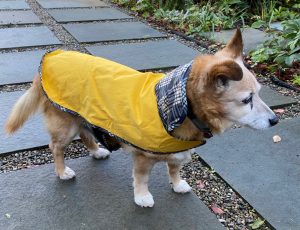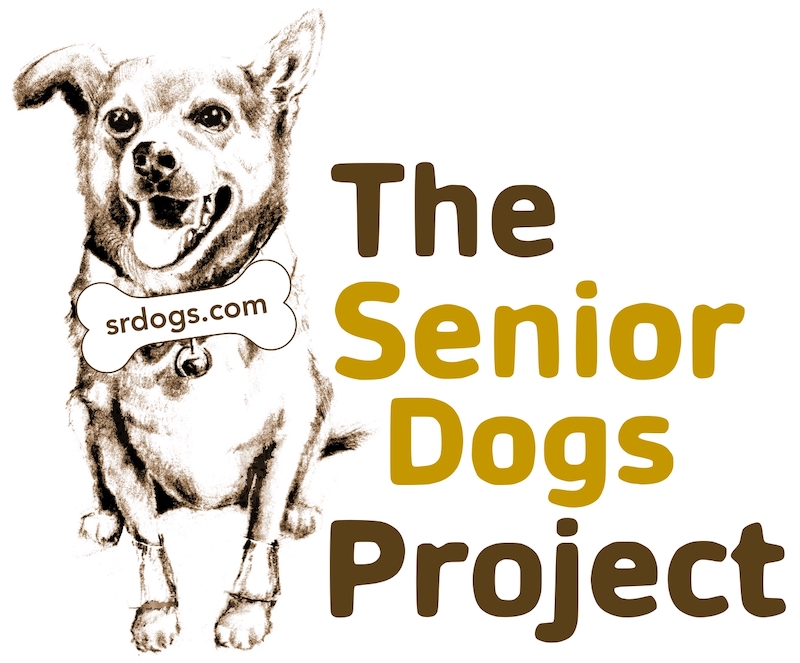 Give your senior dog adequate, appropriate exercise, adjusted to changing abilities or health issues (e.g., arthritis) and environmental conditions (e.g., weather, walking surfaces). Senior dogs need both physical exercise and mental stimulation. Of course, the level of need for these varies individually with every dog. Don’t assume, however, that a dog’s age automatically means it’s okay to allow the dog to sleep all day (other than when at the food bowl). Lack of exercise can lead to obesity. Lack of mental stimulation has a depressing effect, which can lead to both obesity and a less-than-optimum existence.
Give your senior dog adequate, appropriate exercise, adjusted to changing abilities or health issues (e.g., arthritis) and environmental conditions (e.g., weather, walking surfaces). Senior dogs need both physical exercise and mental stimulation. Of course, the level of need for these varies individually with every dog. Don’t assume, however, that a dog’s age automatically means it’s okay to allow the dog to sleep all day (other than when at the food bowl). Lack of exercise can lead to obesity. Lack of mental stimulation has a depressing effect, which can lead to both obesity and a less-than-optimum existence.
Exercise is as essential to dogs as it is to humans. It is profoundly tied to a dog’s physical, mental, and emotional health. A sedentary dog is a bored dog, often an overweight dog, and, in general, a less-than-optimally-healthy dog. In older dogs, obesity is the most common condition that vets see, and lack of exercise is a critical component of it.
As dogs age, they still need their exercise to benefit their heart, lungs, circulation, digestive system, and joints — as well as to fight obesity. Compared with younger dogs, however, older dogs need to adjust the type and duration of the exercise they do.
Every dog is different in the way he or she ages and the exercise he or she can handle. You really need to be very observant in assessing your particular dog’s abilities, natural inclinations, and current state of health. Keep alert to your dog’s being excessively out of breath, or to a drooping head and tail. If your dog coughs or does not get her breath back after five minutes of rest following exercise, have the vet check her heart. In fact, if your dog is over 7 and has not had a check-up including a geriatric screening for more than six months and she has not been exercising regularly, get the check-up before beginning an exercise program.
Keep in mind that in general smaller dogs — even younger ones — aren’t meant for distance running (therefore, it’s not a good idea to take a small dog jogging with you). And, if your dog is a larger dog, even if she enjoys running, she may be prone to hip dysplasia, which probably means no running after a certain age.
Other basics to keep in mind: It’s best to exercise your dog before he eats and to wait about half an hour after the exercise session before giving a meal. Keep your dog out of the sun, and, on a hot day, it’s probably best not to exercise outdoors at all. Very cold, wet days are also times when indoor exercise is more appropriate.
If your dog has been diagnosed with hip dysplasia, check with your vet for recommendations on an exercise program. Usually walking and swimming are the best activities. For walking, use a leash so that you can control the duration and strenuousness of the exercise.
Two shorter walks will be less stressful on aging joints than one long walk. The walks can be quite brisk, provided the vet has given approval. A brisk walk should have four components:
- a warm-up of about 5 minutes, gradually increasing the pace
- brisk walking of about 20 minutes
- a cool-down of about 5 minutes, during which you gradually decrease the pace
- a drink of water.
If you play fetch with your older dog, throw the ball or toy a little closer than you did when your dog was younger, and repeat the toss fewer times. After a point, it is probably advisable to stop playing fetch and to concentrate on walking or swimming.
When swimming, remember that an older dog will tend to become chilled much more quickly than a young dog. Take big towels along, and use them to dry off your dog as soon as he gets out of the water — and preferably before he begins shivering.
Keep in mind that your dog will do anything to please you. That will mean he may tend to become over-exerted in running or playing simply because he thinks that’s what you expect. You will need to judge carefully and to adjust the strenuousness and duration of the exercise accordingly.
At-home exercise is also a good alternative for older dogs. Use a carpeted area for the session, and one of your dog’s favorite toys. You can play a modified game of “fetch” in a relatively small area. You might also want to play a game that involves your dog doing “roll-overs” or lying on her back to “kick the air.” “Wrestling” and “keep away” are two other good games to play with your dog. The idea is to keep her active and moving in a physically non-stressful way. Use your imagination to invent other at-home games.
It’s never too late to start an exercise program for your dog. Just as with a human, though, you should check your dog’s general health with your vet, and then begin the exercise program gradually. If your dog has been inactive over a long period, frisby-chasing in the first exercise session is definitely not one of the choices! Easy, companionable walks of about ten or fifteen minutes a couple of times a day will make a good beginning.
Tellington TTouch can also be of great benefit in keeping your older dog active. More information on Tellington TTouch….
Mental Stimulation
Suggestions for games and devices here…. You may have to make an investment in the toys and devices that are recommended, but it will be well worth the expense.
Here’s the link for you to print out a chart that summarizes the Senior Dogs Project’s Ten Tips to Keep Your Senior Dog Healthy.
